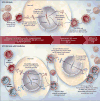The challenge of HIV-1 subtype diversity
- PMID: 18403767
- PMCID: PMC2614444
- DOI: 10.1056/NEJMra0706737
The challenge of HIV-1 subtype diversity
Erratum in
- N Engl J Med. 2008 Oct 30;359(18):1972
-
The challenge of HIV-1 subtype diversity.N Engl J Med. 2008 Oct 30;359(18):1965-6. doi: 10.1056/NEJMc086373. N Engl J Med. 2008. PMID: 18971501 No abstract available.
Figures



References
Publication types
MeSH terms
Substances
Grants and funding
LinkOut - more resources
Full Text Sources
Other Literature Sources
Medical
